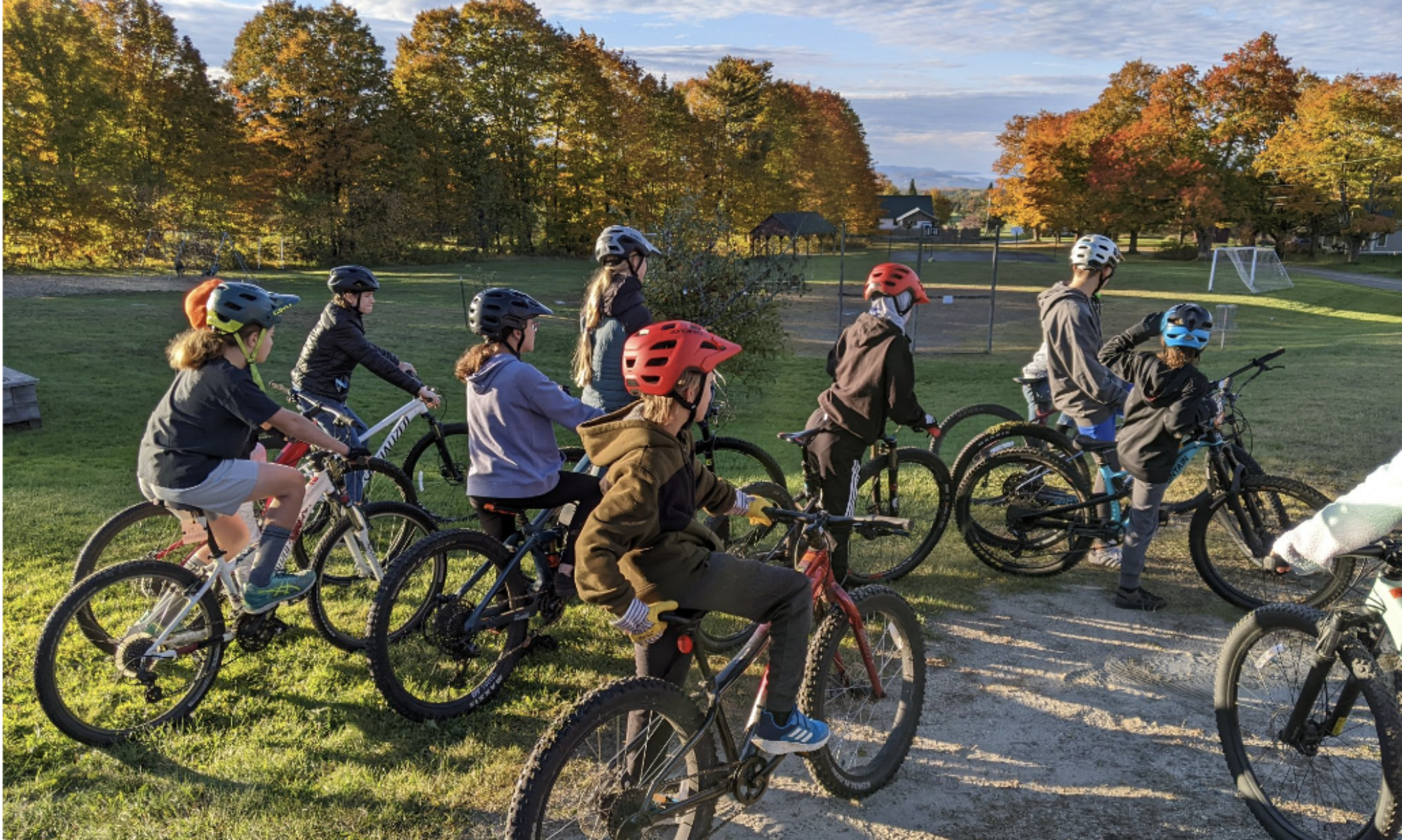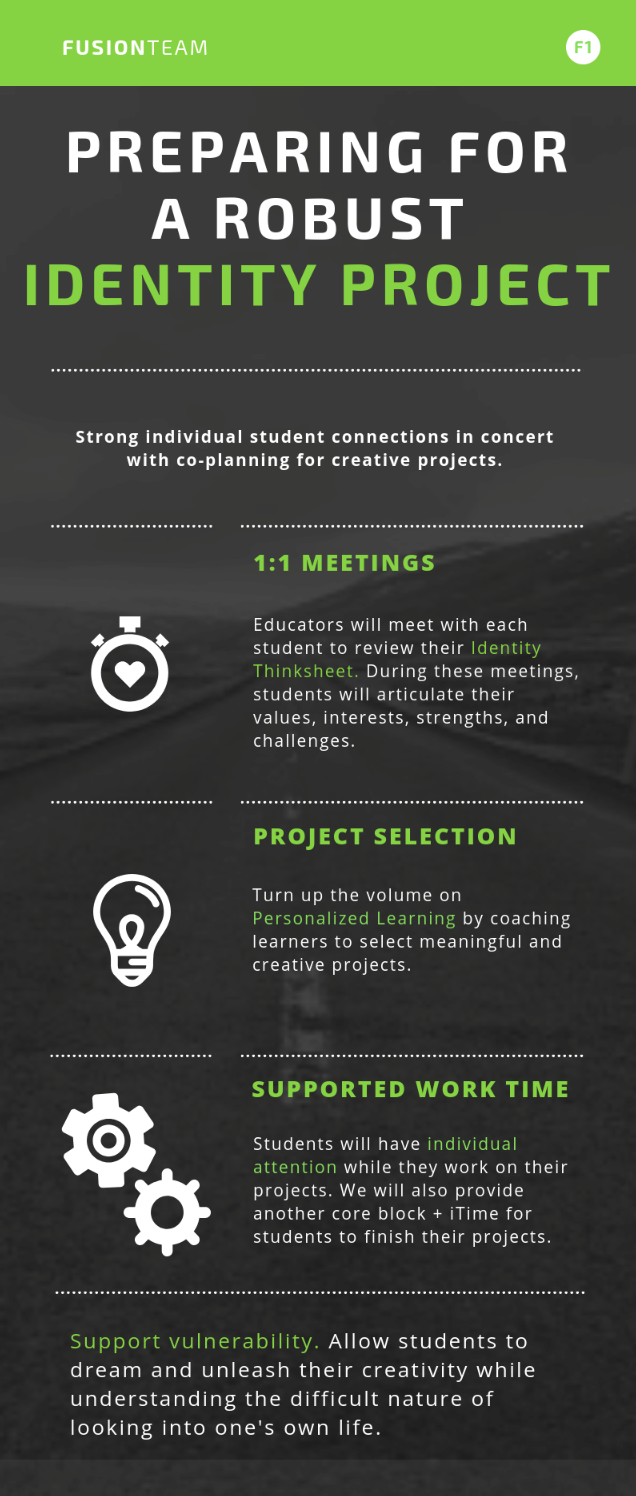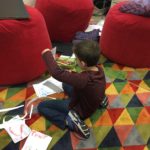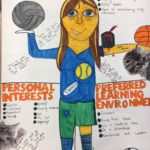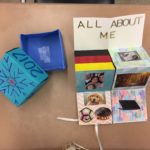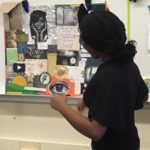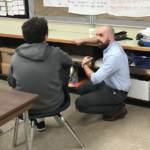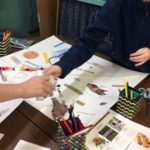Beyond the “About Me” page
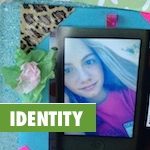 “What is important to know about me to help me learn?” Every student at Frederick H. Tuttle Middle School attempted to answer this question last year.
“What is important to know about me to help me learn?” Every student at Frederick H. Tuttle Middle School attempted to answer this question last year.
Student responses took many forms: poems, videos, sculptures, visual art, and more. At the same time, teachers crafted their own projects in order to inspire students. As the “About Me” page of a Personal Learning Plan (PLP) is making itself a rite of passage for Vermont adolescents, this school used a school-wide identity project to invoke creativity and maximize meaningfulness.
Let’s look at how Tuttle staff created a number of powerful, courageous and deeply personal scaffolds to launch this work with students. As a result, students wound up creating some amazing products to put the “personal” in PLPs.
Launching with staff
During a summer in-service, Tuttle’s teacher-led Professional Learning Committee briefly presented the idea of an identity project to the rest of the staff. The school was focused on improving the PLP process. Staff envisioned this identity project as a way to kick-start the process with flair.
It was also something that teachers could do together. The identity project would form a locus of collaboration among the “extended teams” — core team teachers plus Exploratory teachers — who were charged with revitalizing PLPs. The leadership team crafted slides that laid out the rationale for the project, presented supportive research, and provided resources. Teachers agreed on the driving question. The endpoint was clear, with time set aside for teacher teams to review student projects.
But after one planning session, and with the pressure of a new school year looming, there was a certain amount of skepticism in the room.
Then, behavior interventionist Connor Umsted wrote a deeply personal identity poem he performed for his colleagues.
Before the performance, he noted, “I don’t often share my writing out loud. So I just want to apologize for any nerves.” But his performance was mind-blowing and heart-felt. Connor came out of nowhere. He showed how a creative product could respond to the driving question. He modeled putting yourself out there. Most importantly, he made his colleagues feel. And this solidified the resolve of the entire faculty to support the creative process of students. Other members of the staff created and shared their own identity projects.
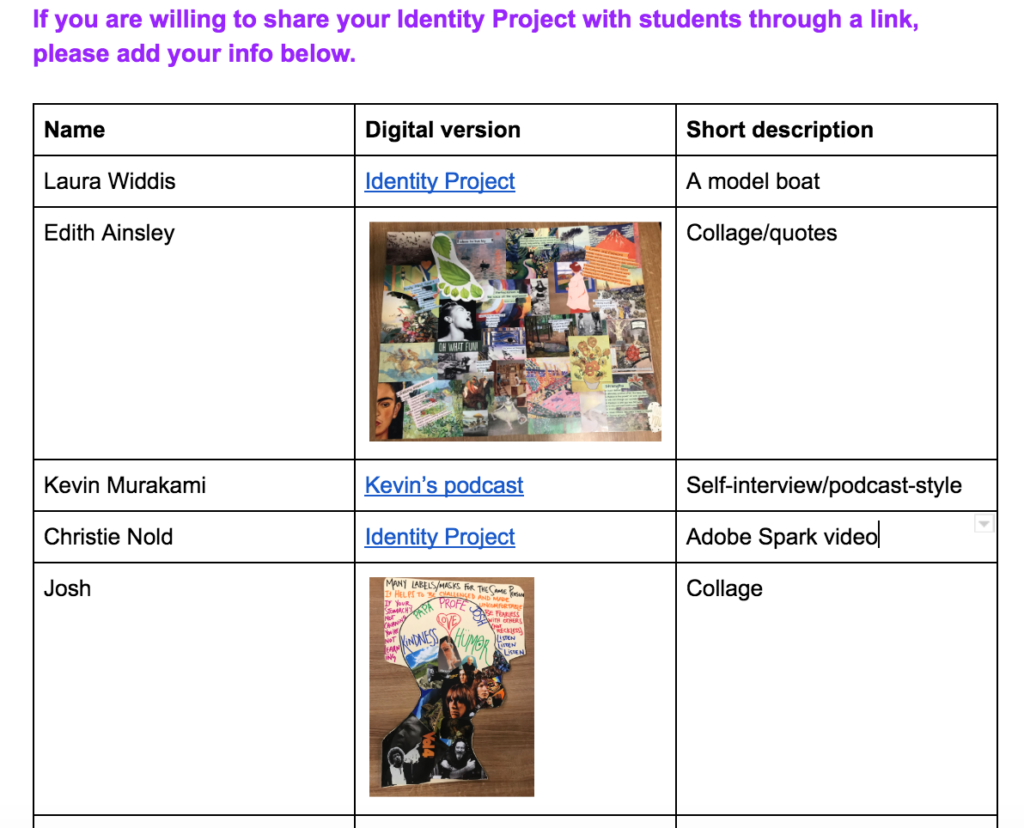
Launching with students
During those first few weeks of school, teachers worked with students on the usual beginning-of-school year stuff, including “getting to know you” and team-building activities. Though many teachers already had plans in place, the school crowd-sourced a list of high quality identity activities. Students could choose what was most meaningful from the activities when they created their own response to the driving question.
For logistics, the leadership team created a set of optional launch slides with a timeline, description, and introductory activity. Teams adapted those slides or created their own. Then they launched the project with students at the beginning of October.
The school created a list of teacher-developed projects that could be shown as exemplars during launches. Most teachers shared their own products and stories as a way to connect with and inspire students. Like any high quality project-based learning experience, the identity project provided a narrative container to motivate and anchor new skills and knowledge. It became a concrete vehicle for reinforcing the beginning-of-year messages from each team, such as connection, choice, creativity, and caring.
Finding work & review time
The school carved two two-hour work sessions out of the master schedule for students to complete their project in early October. Many teams provided additional time during advisory.
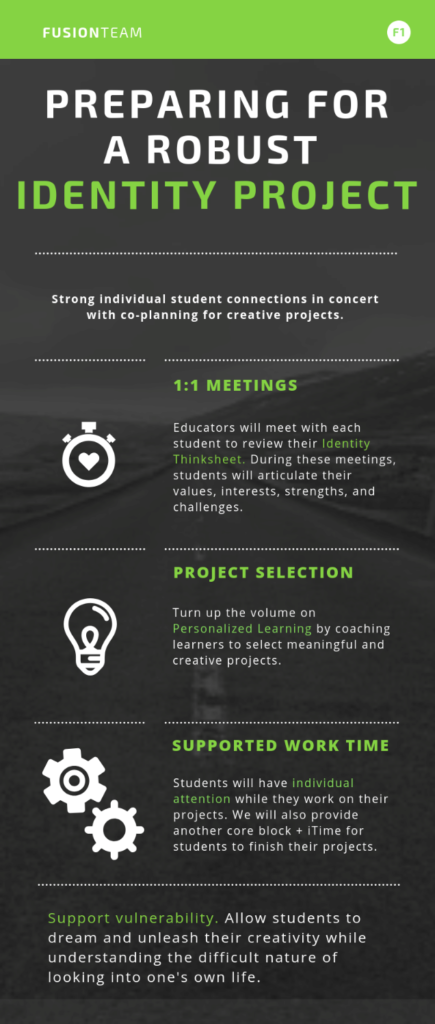
The source material for students’ projects came from the beginning of year activities. Students decided what was most important to share. In some cases a student might take one activity, like the Six Word Memoir, and make it the centerpiece of their final product. Or pick and choose from a bunch of new insights. Students used graphic organizers and scaffolding documents (like this one) to structure their thinking. Teachers actively worked with students one-on-one and in small groups during work time. Students were often given a choice of the type of environment where they preferred to work – quiet, collaborative, crafting and making, etc. The exploration of identity and creative development of projects went hand-in-hand with building relationships and community.
Intentional and collaborative work reviews
One of the initial agreements of the identity project was that every student would get feedback from at least one teacher. Many teams took this a step further and reviewed each student’s project together. Students had put so much work into their projects, that teachers devoted time to a thorough review of each one.
Think about that. These teams sat together and went through their students one-by-one to discuss what they know about each student and what they learned from his or her project. What an incredible learning experience.
Launching with the school community
Each team set up a process where students could share their projects. In some cases this happened in small groups in advisory. But some teams set up “Me Museums” where students shared their final products, learning about each other in the process. And these projects were important resources for parent conferences in the fall. By the end of the fall semester, most students had shared their deeply felt identity work with teachers, peers, and families — all of the stakeholders who help them learn.
After receiving feedback, one student told a special education teacher,
“I didn’t think anybody would actually ever look at my project. Thank you.”
The student had come to an after-school help session for the first time that afternoon. With teachers creating intentional scaffolds and modeling their own identity work, Tuttle launched the PLP process in a truly personal way.
